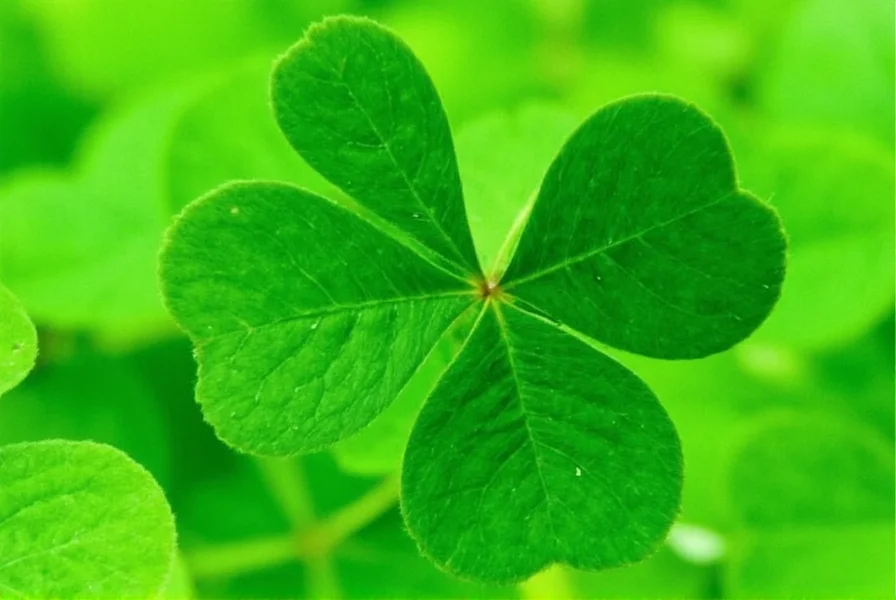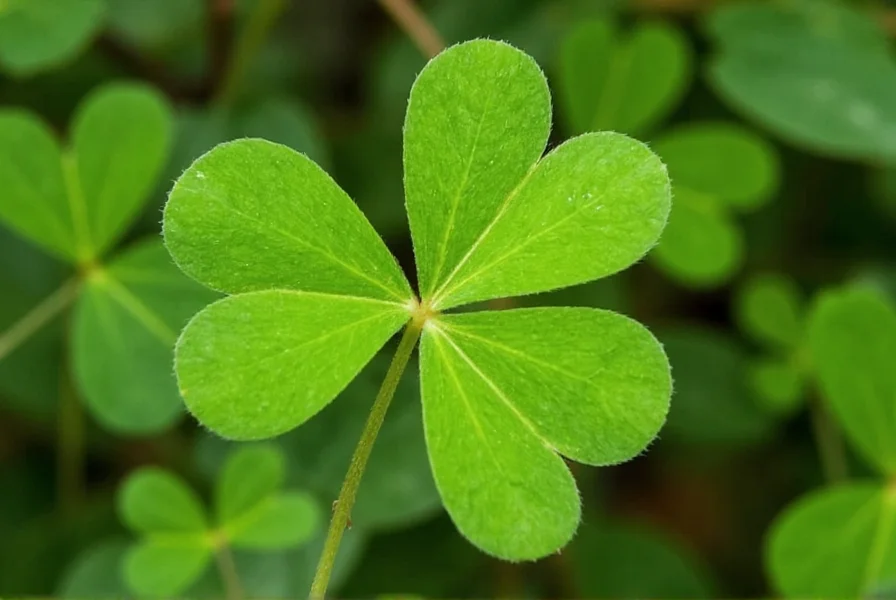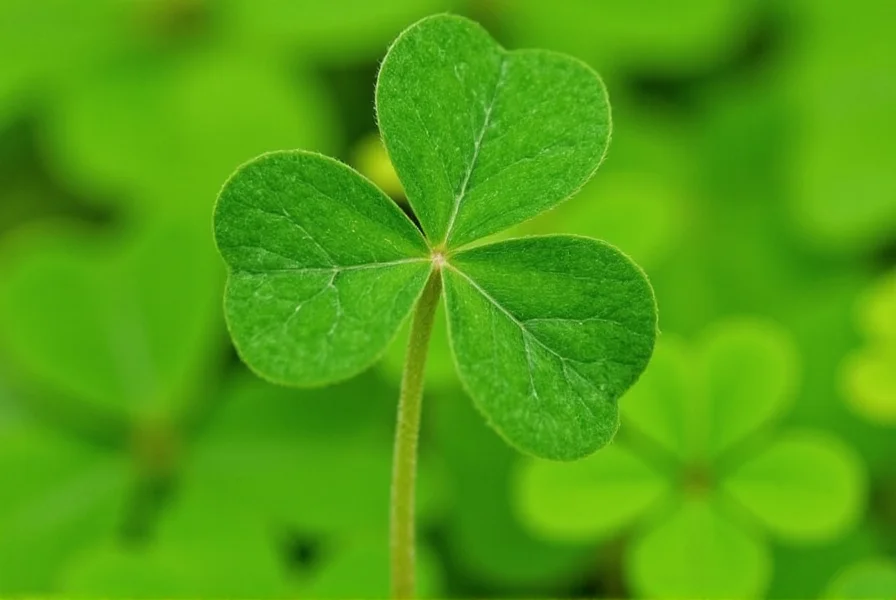For centuries, the elusive four-leaf clover has captured human imagination as nature's lucky charm. While the standard clover displays three heart-shaped leaflets—a symbol traditionally associated with the Christian Holy Trinity—the appearance of a fourth leaf transforms this ordinary plant into something extraordinary. This botanical anomaly isn't just folklore; it has genuine scientific explanations behind its rarity and formation.
The Science Behind Four-Leaf Clovers
Four-leaf clovers result from a combination of genetic and environmental factors. The white clover plant (Trifolium repens) typically produces three leaflets per leaf structure due to its genetic programming. However, researchers have identified a specific recessive gene that, when expressed, causes the development of a fourth leaflet.
Environmental conditions also play a crucial role. Factors such as soil composition, temperature fluctuations, and even physical damage to the plant can trigger the expression of this recessive trait. Some studies suggest that clover patches growing in nitrogen-rich soils show slightly higher occurrences of four-leaf variants.
| Clover Variation | Frequency | Symbolic Meaning |
|---|---|---|
| Three-leaf (Shamrock) | Common (100%) | Faith, Hope, Love |
| Four-leaf | 1 in 10,000 | Faith, Hope, Love, Luck |
| Five-leaf | 1 in 20,000 | Extra money or financial gain |
| Six-leaf | 1 in 100,000 | Extra happiness or long life |
Symbolism Across Cultures
The four-leaf clover's symbolism extends far beyond simple luck. In ancient Celtic tradition, Druids believed these rare plants could help spot evil spirits and provide protection. Each leaf carries specific meaning that has evolved across cultures:
- First leaf: Represents faith—the foundation of spiritual connection
- Second leaf: Symbolizes hope—optimism for the future
- Third leaf: Stands for love—both romantic and universal compassion
- Fourth leaf: Embodies luck—the unexpected gift of fortune
Unlike the three-leaf shamrock (which St. Patrick allegedly used to explain the Holy Trinity), the four-leaf version carries no religious significance in Christian tradition but has become a secular symbol of good fortune worldwide.

Practical Tips for Finding Four-Leaf Clovers
While the odds seem daunting, certain strategies can improve your chances of discovering these botanical treasures:
- Train your eyes: Spend 15-20 minutes scanning a clover patch to adjust your vision to recognize the subtle differences
- Look in established patches: Older clover colonies have higher genetic diversity and more four-leaf occurrences
- Check after mowing: Disturbed plants sometimes produce more mutations
- Search in morning light: Low-angle sunlight creates shadows that highlight leaf variations
- Focus on edges: Clover growing at the boundaries of patches shows more genetic variation
Professional clover hunters report that consistent searching in the same patch over multiple seasons yields better results than constantly changing locations. Some enthusiasts even develop a "clover vision" that allows them to spot variations more quickly with practice.
Five-Leaf and Rarer Variations
While four-leaf clovers capture most attention, even rarer variations exist. Five-leaf clovers (sometimes called Royal Clovers) occur approximately once in every 20,000 plants and traditionally symbolize financial gain. Six-leaf specimens, appearing about once in 100,000 plants, represent extra happiness or long life in folklore.
The current world record for the most leaves on a single clover stem stands at 63 leaves, verified by Guinness World Records in 2023. These extreme variations typically result from significant genetic mutations combined with ideal growing conditions.

Preserving Your Discovery
Once you've found your four-leaf treasure, proper preservation ensures it lasts. The traditional method involves pressing the clover between the pages of a heavy book for 7-10 days. Modern alternatives include:
- Silica gel drying for faster results with better color retention
- Laminating the pressed clover for wallet-sized keepsakes
- Encasing in resin jewelry for wearable memorabilia
Many cultures have specific traditions around preserving four-leaf clovers. Irish folklore suggests carrying the clover in your left pocket to maintain its luck-bringing properties, while German tradition recommends placing it under your pillow to ensure pleasant dreams.
Conclusion
The four-leaf clover represents one of nature's perfect intersections between scientific phenomenon and cultural symbolism. Its rarity makes each discovery special, while its universal symbolism of faith, hope, love, and luck transcends cultural boundaries. Whether viewed through a botanical lens or embraced as a meaningful talisman, the four-leaf clover continues to inspire wonder and optimism across generations.
How rare is a four-leaf clover actually?
Four-leaf clovers occur naturally approximately once in every 10,000 three-leaf clovers. This rarity stems from a recessive gene that requires specific genetic and environmental conditions to express. Some clover varieties have been selectively bred to produce higher rates of four-leaf specimens, but in natural settings, the 1 in 10,000 ratio remains accurate.
What does each leaf of a four-leaf clover represent?
Traditionally, each leaf carries specific meaning: the first leaf represents faith, the second symbolizes hope, the third stands for love, and the fourth embodies luck. This symbolism has evolved across cultures but maintains these core elements in most Western traditions. Some variations assign slightly different meanings, but the faith-hope-love-luck sequence remains most widely recognized.
Can you increase your chances of finding a four-leaf clover?
Yes, experienced clover hunters use several techniques to improve their odds. Training your eyes by spending dedicated time scanning clover patches helps your brain recognize variations more quickly. Older clover colonies and patches growing at boundaries between different areas tend to have higher mutation rates. Searching in morning light when shadows highlight leaf differences and checking areas after mowing (which stresses plants and may trigger mutations) can also improve your chances.
Is there a difference between a four-leaf clover and a shamrock?
Yes, there's an important distinction. A shamrock specifically refers to a three-leaf clover, traditionally associated with Irish culture and St. Patrick's use of the three leaves to explain the Holy Trinity. Four-leaf clovers are genetic mutations of the same plant species (typically Trifolium repens) but carry different symbolic meaning as a lucky charm rather than a religious symbol. All shamrocks have three leaves, but not all three-leaf clovers are considered shamrocks in the cultural sense.
What's the rarest clover leaf variation ever found?
The current verified record for the most leaves on a single clover stem is 63 leaves, documented in Japan and confirmed by Guinness World Records in May 2023. While four-leaf clovers appear once in 10,000 plants and five-leaf variants once in 20,000, each additional leaf becomes exponentially rarer. Six-leaf clovers occur approximately once in 100,000 plants, making specimens with more than ten leaves exceptionally rare natural occurrences.











 浙公网安备
33010002000092号
浙公网安备
33010002000092号 浙B2-20120091-4
浙B2-20120091-4